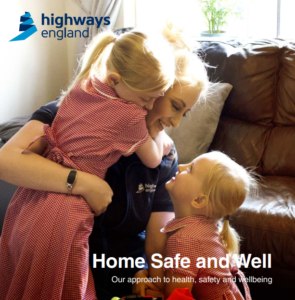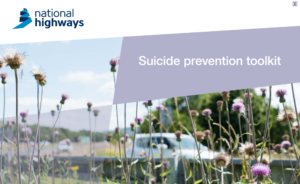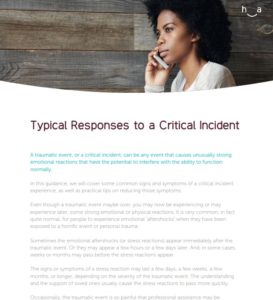The National Highways Supply Chain Safety Leadership Group was formed to give focus to improving safety performance across the National Highways road network through collaborative working and providing a unified voice of the sector.
The Group’s vision is to create a very clear shift in safety performance to ensure everyone who works with us and everyone who travels on the network gets home safe and well.
National Highways’ “Home Safe and Well” Strategy
Home Safe and Well is our approach to health, safety and wellbeing. Our vision that ‘no-one should be harmed when travelling or working on the strategic road network’ is summed up in this simple phrase; we all want and need, to get home every day to the people we love and for the things that we love doing. Our approach is inclusive and aimed at customers, employees and our supply chain.
We are committed to working with strategic partners leading the industry’s approach to suicide prevention. We are working to halve the number of suicides on our roads by 2025 and achieve our longer term aim to have a network where no one will attempt to take their life on it.
Our suicide prevention strategy explains how we will do this. It also explains how we will continue to contribute to delivering the Government’s national strategy for suicide prevention in England: A cross-Government outcomes strategy.
Information is also available on how to sign up for the National Highways Passport. This is a scheme to demonstrate you have the training, experience and qualifications to work safely on any National Highways site. Click here to find out more.
More about our approach to Health, Safety and Wellbeing is available here.
A traumatic event, or a critical incident, can be any event that causes unusually strong emotional reactions that have the potential to interfere with the ability to function normally.
Even though a traumatic event may be over, you may now be experience, or may experience later, some strong emotional or physical reactions. It is very common, in fact quite normal, for people to experience emotional ‘aftershocks’ when they have been exposed to a horrific event or personal trauma.
In this guidance, we will cover some common signs and symptoms of a critical incident experience, as well as practical tips on reducing those symptoms.
National Highways Safety Moment: Mental Health & Wellbeing. Read this guidance about the five stages of grief that people can experience at different times and which do not happen in one particular order.
As well as covering the issue of wellbeing in depth, the Supply Chain School has a selection of resources on the subject of health and safety:
- Health and Safety Executive – Working Time Regulations. Take a Look.
- Behavioural Safety with CECA. Get Started.
- Costain / Highways England Case Study: Improving the Safety of Roadside Engineers. Read Now.
- The Safe Use of Vehicles on Construction Sites. Take a Look.
- Standardised Approach To Preventing Temporary Traffic Management Incursions. Read Now – Balfour Beatty, in collaboration with the Highways Delivery Community, have created this guide. The scope of this document was to develop and share best practice on incursions and set a uniform, standard approach for highways projects to reduce the risk of incursions into work areas and establish a standard Safe System of Work.




